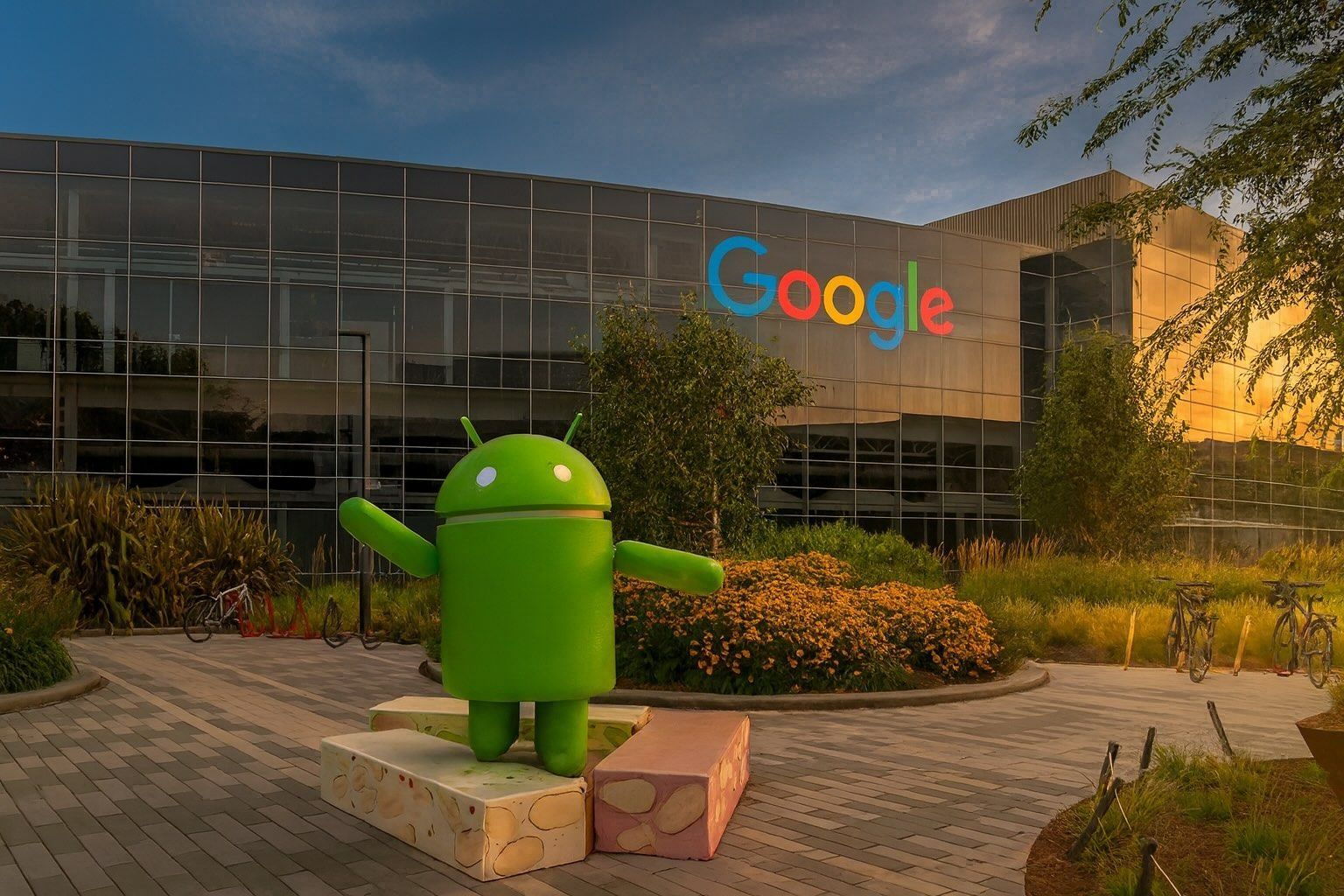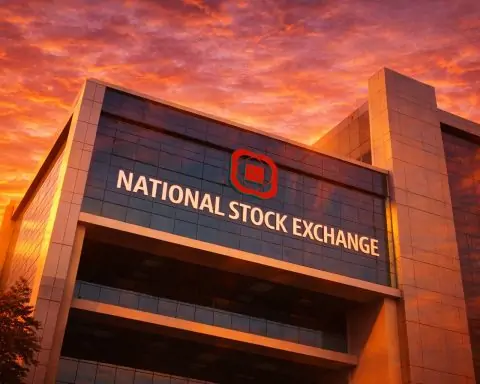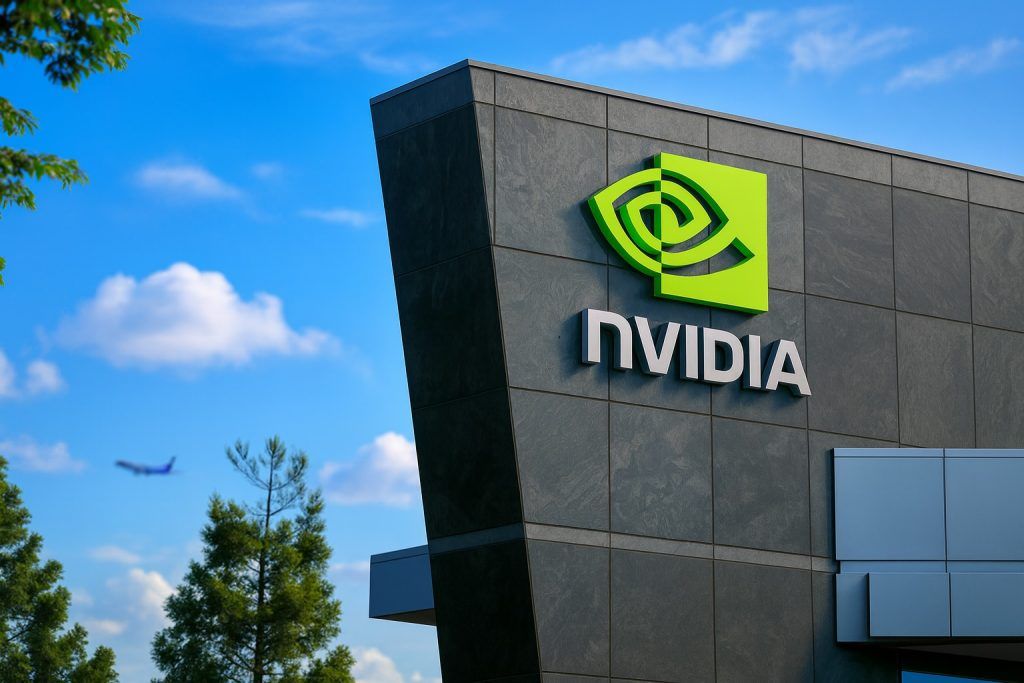Key Facts October 21, 2025
- All-Time High Stock Price: Alphabet Inc. (NASDAQ: GOOGL) shares hit an all-time closing high of around $256 on October 20, 2025, putting the Google parent company’s market capitalization near $3 trillion [1] [2]. The stock is up roughly 4% over the past week and more than 30% year-to-date, vastly outperforming the S&P 500 and even other Big Tech giants [3] [4].
- Q3 Earnings on Deck: Alphabet is scheduled to report third-quarter earnings on October 29, 2025, and investors are optimistic. Analysts expect robust growth – around 16% higher revenue and 27% higher earnings per share for full-year 2025 – fueled by a rebound in advertising and booming cloud-computing demand [5]. In Q2, Google’s ad revenue showed resilience (growing ~12% despite AI competition) and Google Cloud revenue jumped 32% with improving profit margins [6] [7].
- AI Investment Spree: In recent weeks, Google unveiled over $24 billion in new AI infrastructure spending. This includes a $15 billion AI data center in India – its largest-ever investment in that country – and a $9 billion expansion of U.S. data centers [8] [9]. These projects underscore Alphabet’s determination to lead in AI, as the company’s capital expenditures are projected to exceed $80 billion in 2025, up sharply from last year [10]. Google also rolled out new AI-packed products in October, such as the Pixel 10 smartphone with a next-gen Tensor G5 chip and “AI everywhere” features [11].
- Analysts Grow Bullish: Wall Street sentiment on Alphabet is overwhelmingly positive. Morgan Stanley recently hiked its price target from $210 to $270 (Overweight) [12], BMO Capital Markets raised its target to $294 citing Google’s “AI leadership” in Search and Cloud [13], and Oppenheimer issued a Street-high $300 target – about 18% above the latest price – calling Alphabet a better near-term bet than rival Meta Platforms [14]. In total, over two dozen analysts rate the stock a Buy or Strong Buy, and even the few holdouts acknowledge Alphabet’s strong fundamentals amid the AI boom [15].
- Regulatory News Mixed: Alphabet received a major legal reprieve last month when a U.S. judge declined to break up Google’s core business as part of an antitrust case, instead ordering more modest remedies on search contracts [16] [17]. This “favorable” ruling eased investors’ breakup fears and helped ignite Alphabet’s recent rally [18]. However, regulatory pressures persist. The U.K.’s Competition and Markets Authority just designated Google’s search unit with a special “strategic market status,” paving the way for tougher oversight of its 90% search share [19] [20]. And earlier this month, the U.S. Supreme Court allowed an injunction (stemming from Epic Games’ lawsuit) that will force Google to open up its app store policies by 2026 [21] [22]. Regulators in the EU and U.S. continue to scrutinize Google’s dominance in search and advertising, keeping a backdrop of risk even as the company avoids the most drastic measures for now.
- Broader Context: Alphabet’s surge comes amid a wider tech rally driven by enthusiasm for artificial intelligence. The tech-heavy Nasdaq Composite recently notched record highs on this “AI euphoria,” and Apple Inc. just joined Alphabet in hitting a fresh record stock price [23] [24]. Some market watchers warn that AI-fueled valuations are looking stretched – a Bank of America survey found 54% of fund managers now see AI stocks in a bubble [25] – but most analysts still see more upside for Alphabet given its strong earnings, massive user base, and investments in future growth. “We are more bullish on [Alphabet] near term, given more conservative estimates and lower valuation,” an Oppenheimer analyst wrote, arguing Google’s stock is actually reasonably valued compared to peers even at these highs [26] [27].
Alphabet Rallies to Record Highs, Nears $3 Trillion Club
Alphabet’s stock has been on a tear, soaring to record levels in mid-October and briefly joining the exclusive $3 trillion market capitalization club. On October 20, Alphabet’s Class A shares closed around $256.43 – the highest ever – valuing the Google parent at roughly $3.1 trillion [28] [29]. That put Alphabet in rare company alongside Apple and Microsoft in the $3T valuation league. The latest leg up caps an extraordinary 2025 run: Alphabet stock has climbed about 30% year-to-date, far outpacing the S&P 500’s ~12% gain and even beating most of the other “Magnificent 7” mega-cap tech stocks [30] [31].
This week’s surge was fueled by renewed optimism in tech. Wall Street broadly rallied to start the week of Oct. 20 as investors grew more confident about corporate earnings and shrugged off macro worries. The Nasdaq Composite jumped ~1.4% on Monday, and Alphabet was among the leaders. It gained roughly 1% that session, helping push the stock to a fresh high [32]. “Apple is getting all the press for hitting a new all-time high today but Alphabet has done the same thing,” noted one market strategist, pointing out Google’s quietly similar milestone [33]. Even with a slight breather on Oct. 21, Alphabet is less than 1% off its peak.
Notably, Google’s market momentum accelerated in Q3, which saw the stock jump almost 38% – its best quarter since 2005 [34]. One catalyst was a pivotal early-September court decision (in the DOJ’s search monopoly case) that imposed restrictions on Google’s business practices but rejected calls to break up the company [35] [36]. The ruling spared Alphabet from a forced divestiture of key assets like Chrome or Android, relieving a major overhang. Investor relief was palpable: “The antitrust ruling cleared structural risks in Google’s business,” noted analysts, and Alphabet’s stock surged over 10% in the weeks after the decision [37]. By mid-September, shares blew past the $250 level for the first time, and the company’s market cap topped $3.05 trillion [38].
Since then, buying enthusiasm has remained strong. Technical indicators show the rally has made Alphabet overbought in the near term – its Relative Strength Index (RSI) hit 89 in September, a level not seen in years, reflecting almost euphoric demand [39]. Yet, many traders argue that robust fundamentals justify the gains. Each time the stock has dipped on broader market jitters (such as a brief 3.6% Nasdaq slide on Oct. 10 amid trade war fears [40] [41]), Alphabet has quickly found footing and rebounded to new highs, supported by what one analyst calls “the company’s strong fundamentals and upcoming catalysts” [42].
Advertising Rebound and Cloud Growth Bolster Outlook
Underpinning Alphabet’s stock surge is renewed strength in its core businesses after a somewhat sluggish 2024. Google’s primary moneymaker – digital advertising – is growing again at a healthy clip, defying concerns that AI chatbots would erode search ads. In Q2 2025, Google’s search and other advertising revenues grew about 12% year-over-year, a surprisingly robust performance given intensifying competition from AI rivals [43] [44]. Executives have noted that Google’s incorporation of generative AI features within search (through new AI snapshots and assistants) has not cannibalized its ad business. In fact, CEO Sundar Pichai said AI enhancements have “about the same monetization as a standard search,” meaning Google isn’t sacrificing ad dollars as it adds AI to results [45]. This reassured investors that search remains a cash cow despite the AI revolution.
Meanwhile, Google Cloud has emerged as a second growth engine. The cloud division’s revenue jumped 32% year-on-year last quarter, and importantly, Google Cloud turned decisively profitable with operating margins reaching 21% (up from 11% a year prior) [46]. Deals with major customers like Meta Platforms and even OpenAI (the maker of ChatGPT) to use Google’s infrastructure have validated its cloud offerings [47]. Alphabet’s cloud unit also snagged a marquee win as the official cloud provider for the 2028 Olympics, demonstrating its competitive edge in high-profile, AI-driven projects [48]. Investors are watching Q3 earnings to see if Cloud can maintain its torrid growth and margin expansion. Continued momentum there would “confirm that Google is excelling even when everyone assumed it couldn’t,” as one analyst put it [49] [50].
Wall Street expects strong Q3 results overall. Consensus estimates point to double-digit revenue growth and improving profitability. For full-year 2025, the street projects Alphabet’s revenue will climb to around $369 billion (roughly +16%) with earnings per share up about 27% [51]. That growth – on such a massive revenue base – reflects both cyclical recovery and new AI-related tailwinds. Importantly, Alphabet’s cost discipline has improved after significant hiring and investment sprees: the company implemented layoffs earlier in the year and recently cut another 100 cloud division jobs as it focuses on efficiency in an AI-first era [52] [53]. Those moves have helped expand margins. As a result, Alphabet is expected to generate over $80 billion in free cash flow this year, giving it ample room to keep investing in big bets while still returning capital to shareholders (through buybacks – the company has repurchased billions in stock).
Investor confidence is high heading into the Oct. 29 earnings call. Alphabet’s management will likely highlight key drivers: a stabilizing digital ad market (YouTube ad sales have also been recovering, and paid clicks on Google are rising), the profitability milestone in Cloud, and the early payoff from AI initiatives. Any hints about future AI products or monetization – such as progress in generative AI search, or new AI tools for YouTube, Android, and Workspace – will be closely watched as well. Given the stock’s big run, some short-term volatility is possible if results or guidance disappoint. But many analysts argue that Alphabet’s long-term trajectory remains on track. “Alphabet still trades at a discount to its peers…and generates the most net income of all of them,” notes The Motley Fool, emphasizing that the stock’s valuation (around 27× earnings) is actually modest relative to Big Tech counterparts like Microsoft or Nvidia [54] [55]. In other words, there may be room for the rally to run if Alphabet delivers on earnings and growth expectations.
Big Bets on AI: Massive Spending and New Products
Google’s stock surge is being driven not just by quarterly numbers but by its ambitious vision in artificial intelligence. In October, Alphabet has doubled down on AI investments around the globe. On October 14, Google announced a $15 billion commitment to build an AI-focused data center in Andhra Pradesh, India – its largest investment ever in India [56]. The new campus will start with 1 gigawatt of computing capacity and expand over five years, providing the backbone for Google’s AI and cloud services in a critical growth market [57]. Indian officials said the center could generate nearly 200,000 jobs, and Google touted it as accelerating “India’s own AI mission” [58] [59]. This comes on top of a recent pledge by Google to invest £5 billion ($6.7B) in U.K. AI infrastructure over the next two years [60], as well as a new $9 billion expansion of its South Carolina data center in the U.S. to house advanced AI supercomputers [61]. All told, Alphabet’s capital expenditures in 2025 are on track to skyrocket – the company said it plans to spend about $85 billion this year on data centers and other capex to meet booming AI service demand [62]. Such a figure would dwarf last year’s ~$52.5B in capex and even exceeds rival tech giants’ spending, underscoring Google’s commitment to staying at the cutting edge of AI [63].
Google is also showcasing what all that investment is building. At its Made by Google event in early October, the company unveiled the Pixel 10 and Pixel 10 Pro smartphones, which are packed with AI-powered features [64]. These new flagship phones sport Google’s in-house Tensor G5 chip, delivering a 60% boost in AI processing power to enable smarter on-device features [65] [66]. From enhanced photography and voice assistance to predictive tools, Google is weaving AI deeper into the user experience. It even introduced a Pixel 10 Pro foldable phone and a new Pixel Watch 4, all boasting AI enhancements for things like health coaching and personal assistant capabilities [67]. Additionally, Google gave its Nest smart-home gadgets an AI overhaul: updated Nest security cameras and doorbells now come with the company’s latest “Gemini” AI assistant embedded, enabling them to recognize complex situations (like distinguishing a delivery driver leaving a package vs. generic motion) and answer users’ natural-language questions about home status [68] [69]. These product launches convey a clear message – AI is everywhere in Google’s ecosystem, which not only keeps consumers hooked but also opens up future monetization opportunities (through premium hardware, subscriptions, or services enhanced by AI).
Another closely watched Alphabet venture in AI is Waymo, its self-driving car unit. While not a big revenue contributor yet, Waymo marked a milestone this month: five years of operating the first robotaxi service (launched in Phoenix in 2020) [70]. As of October 2025, Waymo runs driverless ride-hailing in five metro areas and is expanding to more cities [71]. The company’s progress – and the challenges (a recent traffic incident in Atlanta made headlines) – illustrate both the promise and complexities of Alphabet’s bets beyond search. Investors largely give Alphabet credit for these “Other Bets” as long as the core businesses keep performing. But any signs that units like Waymo are approaching commercialization at scale could add further upside to Alphabet’s long-term valuation.
In sum, Alphabet’s splashy AI investments and products serve a dual purpose: driving future growth and exciting the market today. “Alphabet’s heavy AI and data center investments [will] fuel future growth,” analysts predict, with consensus that these expenditures will pay off in higher revenue and earnings in coming years [72]. The market’s recent enthusiasm suggests investors see Alphabet as a key winner of the AI era – a company successfully leveraging its massive resources to stay ahead of technology trends.
Wall Street Analysts: “Don’t Bet Against Google”
The bullish case on Alphabet has been reinforced by a chorus of positive analyst commentary in recent days. Many on Wall Street see further upside for the stock even after its 2025 rally. For example, Oppenheimer’s tech analysts this week upgraded their outlook for Alphabet, arguing that the company’s earnings estimates remain conservative and its valuation is attractive. They pointed out that while both Alphabet and Meta (Facebook’s parent) are riding AI and advertising tailwinds, “we are more bullish on [Alphabet] near term, given more conservative estimates and lower valuation,” preferring Google’s stock over Meta’s for the coming year [73] [74]. Oppenheimer’s new $300 price target for Alphabet is the highest on Wall Street and implies roughly 18% upside from current levels [75].
They are hardly alone in revising targets upward. In early October, Morgan Stanley boosted its price target to $270 and reaffirmed an Overweight rating, citing strength in Google’s ad business and AI initiatives [76]. BMO Capital Markets went further, lifting its target to $294 while praising Google’s “AI leadership” in search and cloud as a key driver of growth [77]. Even traditionally cautious shops are acknowledging Alphabet’s momentum – UBS nudged its target to $255 (from $237) ahead of earnings, noting improving ad revenue trends, though the bank kept a neutral rating at the stock’s new highs [78]. Overall, MarketBeat data shows over 25 analysts rate Alphabet a buy, with an average 12-month price target around $245 [79] [80]. (Notably, that average target was set when the stock was much lower; Alphabet has now blown past it, reflecting how reality has outpaced expectations.) A few analysts have warned of possible near-term downside simply because the stock ran up so fast – at ~$257 per share, Alphabet is trading about 6% above the median one-year target of $241 [81]. But those same analysts typically maintain long-term confidence in the company. For instance, Bank of America just reiterated its Buy rating on Oct. 20 [82] even as its model suggested the stock may have gotten temporarily ahead of consensus.
On the bearish fringe, there are only a handful of Alphabet skeptics. A small minority of analysts (just 3 out of 35 tracked) have Sell ratings [83], mostly pointing to risks like regulatory interference or the specter of a tech spending slowdown. Some also note that competition in AI (from the likes of OpenAI/Microsoft or Amazon) could increase costs or erode Google’s dominance over time. But so far, Alphabet’s earnings and market share haven’t wavered – if anything, the company’s scale in data and computing gives it an inherent AI advantage. This sentiment was summed up in a recent investor note: “Alphabet’s diversified business – spanning Search, Cloud, YouTube, and AI – and its leadership in generative AI are driving future growth,” one analyst wrote, after raising his target to $295 [84]. With multiple engines of expansion, Alphabet offers a balance of offensive and defensive qualities that many find compelling: high growth from emerging areas like AI, coupled with fortress-like core profits from search advertising.
As long as Google continues executing well, analysts suggest staying on the ride. The stock’s strong run in 2025 has led some to take profits, but dips have been met with eager buyers. Veteran market observers often cite Google’s track record: the company has navigated numerous threats (social media competition, mobile platform shifts, past regulatory fines) and still managed to increase revenue at a double-digit pace. With AI, cloud, and other bets providing new avenues, many on Wall Street believe Alphabet can sustain a higher valuation. “Don’t underestimate Google,” one strategist remarked, “They have the data, the talent, and the capital to remain on top – and the stock’s performance is reflecting that”. That essentially encapsulates the prevailing view: Few want to bet against Alphabet in this AI-driven tech cycle.
Regulatory Overhang: Antitrust Fears Ease, But Scrutiny Continues
Even as investors celebrate Alphabet’s business momentum, they remain mindful of the regulatory storm clouds around the company. In the U.S. and abroad, authorities are probing whether Google’s dominance in search and advertising harms competition. The good news for Alphabet is that it has so far avoided the most drastic outcomes. The landmark federal antitrust case over Google’s search monopoly reached a conclusion in September 2025, when U.S. District Judge Amit Mehta ordered a series of remedies but stopped short of breaking up the company [85]. The court banned Google’s exclusive deals (which had made it the default search on many devices) and imposed data-sharing requirements to help rival search engines – significant changes, but far from the forced divestitures regulators had sought [86] [87]. Crucially, Judge Mehta rejected the Department of Justice’s call to make Google sell off major assets like the Chrome browser or parts of its advertising business [88] [89]. This outcome lifted a huge weight off Alphabet’s stock. “Judge Mehta ruled against these harsher measures, easing shareholder concerns and igniting the rally,” observed Traders Union after the decision [90]. Alphabet promptly said it would comply with the ruling (while appealing some aspects), and its shares have climbed steadily since investors realized the company wouldn’t be broken apart [91].
However, new battles are brewing. In a separate case targeting Google’s dominance in online advertising technology (AdTech), the DOJ and a coalition of states are pressing for potentially tougher remedies – including a possible forced sale of Google’s ad exchange. That trial was ongoing in October, with Google’s lawyers arguing that unwinding its ad business would be extraordinarily complex (likening it to “going to Mars”) and warning of disruptions to the $200 billion digital ad market [92]. Regulators, for their part, have signaled they want “strong remedies to restore competition,” and the European Union already hit Google with a €2.95 billion fine over ad practices, even raising the prospect of breakup if Google fails to comply with changes [93]. In short, while one antitrust sword has been sheathed, others still hang over Alphabet. Any outcome that forces Google to separate chunks of its ads business or significantly change how it monetizes search could impact the company’s future earnings. So far investors appear confident that worst-case scenarios will be avoided, but this area remains a wildcard.
Across the Atlantic, regulators are also tightening the screws. Britain’s Competition and Markets Authority (CMA) officially designated Google Search under its new “strategic market status” regime – the first Big Tech firm to get that label [94]. This gives the CMA broad powers to ensure Google doesn’t abuse its ~90% U.K. search market share [95]. The watchdog has floated potential rules like requiring fairer search result rankings, easier consumer choice of alternative search engines, and limits on how Google can use third-party content for AI [96]. No specific orders have been made yet, but the CMA can now impose fines and mandates more easily. Google pushed back, arguing such interventions could “inhibit UK innovation and growth” and slow the rollout of new AI features [97]. The U.K. action comes as European regulators remain aggressive: just last month, the EU fined Google $3.4 billion over advertising tech violations [98], and the company faces the EU’s Digital Markets Act constraints as a “gatekeeper.” In Asia, India’s regulators too have multiple cases against Google’s Android and Play Store policies [99].
One immediate change on the horizon is in Google’s app store business. On October 6, the U.S. Supreme Court declined to block a lower court’s injunction won by Epic Games, which will force Google to loosen its Play Store restrictions [100]. Specifically, Google must allow Android users to download third-party app stores within Google Play and permit app developers to direct customers to outside payment methods (bypassing Google’s fees) [101] [102]. Those provisions are set to take effect in late 2025 and 2026, unless Google’s appeal ultimately overturns them. Google argued the changes pose “safety and security risks” and could hurt the user experience, but so far courts have sided with Epic’s view that Google’s practices were anti-competitive [103] [104]. For Alphabet’s financials, the worst-case scenarios (like losing all Play Store commissions) seem unlikely, but even incremental steps to open Android could trim Play revenue or increase competition over time. It’s a space investors are monitoring, though the impact is expected to be modest in the near term (especially compared to the scale of Alphabet’s ad business).
The bottom line is that regulatory and legal issues remain the chief long-term risk for Alphabet’s stock. The company has proven resilient – it’s paid over $10 billion in fines in the past and adapted to new rules without significant dent to profits. But the current wave of antitrust actions is unprecedented in scope, spanning the U.S., EU, and other regions simultaneously. Any material enforcement (like splitting off YouTube or pieces of the ad-tech stack) would be a game-changer. For now, investors seem comforted that no existential breakup is imminent, and Alphabet’s ongoing dialogues with regulators may yield negotiated solutions. The recent U.S. court outcome suggests a possible template: behavioral remedies and oversight, rather than a blunt breakup. As one tech analyst quipped, “Alphabet’s lawyers might be earning their keep, but for investors, the latest rulings have been about as good as we could hope”. Still, it’s a space to watch, as regulatory winds can shift quickly with political pressure. Google’s ability to innovate and grow within whatever new rules emerge will be crucial for sustaining its stock performance in the years ahead.
Big Picture: Short-Term Buzz vs. Long-Term Value
As of late October 2025, Alphabet Inc. finds itself at a crossroads of immense opportunity and high expectations. On one hand, the company is firing on all cylinders – core advertising is rebounding, the cloud division is scaling profitably, and Google is staking a leadership claim in the AI revolution. These factors have propelled its stock to historic highs, rewarding shareholders and making Alphabet one of the world’s most valuable companies. The current market buzz, centered on AI, has undoubtedly been a tailwind for Big Tech and Alphabet in particular. With each new AI breakthrough or product announcement, investors have grown more optimistic that Google will not only defend its turf but expand into new realms of growth.
On the other hand, there are voices urging caution. Some financial commentators note eerie parallels between today’s AI-driven stock surge and past tech bubbles. A recent Bank of England report warned that “the risk of a sharp market correction has increased” due to stretched AI valuations [105]. More than half of fund managers in one survey said many AI stocks are in bubble territory [106]. Even insiders temper the hype – as OpenAI CEO Sam Altman admitted, investors are “overexcited” about AI at the moment [107]. If the broader market’s love affair with all things AI were to cool, high-flying stocks like Alphabet could see more volatility. Additionally, macroeconomic factors lurk in the background: interest rate policy, global growth concerns, and currency fluctuations can all influence large-cap tech performance. Thus far, hopes of a Fed rate cut and a soft landing have supported equity valuations, but any shift in the macro outlook can change sentiment quickly.
For Alphabet specifically, the long-term narrative remains compelling. The company sits on a fortress balance sheet (over $100 billion in cash) and continues to spend heavily on research and development ($40B+ a year) to keep its edge. Its dominance in search, YouTube, and Android gives it unparalleled reach – properties that can be further monetized with new AI features and services. Meanwhile, “moonshot” bets like Waymo (self-driving cars), Verily (health tech, which Alphabet just moved to spin off for more focus [108]), and others offer potential upside options. Shareholder returns have been enhanced by stock buybacks as well, reflecting management’s confidence.
Many analysts see Alphabet as a core long-term holding in any tech portfolio. Its blend of growth and profitability is unique – in fact, Alphabet generated more net income in the past year than any other U.S. company, edging out even Apple [109]. That profit engine gives it resilience. “Alphabet’s stock is at all-time highs, driven by robust fundamentals and not by speculative AI hype,” one Seeking Alpha commentator observed, noting that earnings growth, not just multiple expansion, is behind the rally [110]. Indeed, Alphabet’s price-to-earnings multiple, around 27× forward earnings, is lower than many peers’, suggesting the stock isn’t outrageously priced relative to its earnings power [111]. If the company delivers the expected 20%+ earnings growth in 2025 and beyond, today’s valuation could even look reasonable.
Still, investors will be scrutinizing upcoming events for any cracks in the story. The Q3 earnings report on Oct. 29 is the next major catalyst. Solid results and upbeat guidance could further cement Alphabet’s leadership in this market cycle, potentially pushing the stock higher into year-end. Conversely, a miss or cautious outlook (for example, if advertisers pull back or AI costs crimp margins) might spark a temporary pullback given the high expectations. Beyond earnings, look for management commentary on regulatory matters and AI monetization plans, which could sway sentiment.
In the big picture, Alphabet has navigated the transition into an AI-centric era skillfully so far. The company famous for its search engine is transforming itself into an all-around AI powerhouse – and being richly rewarded by investors for it. With the stock at record heights, the pressure is on to keep executing. But if history is any guide, Alphabet has shown an ability to reinvent and overcome challenges time and again. As 2025 heads into its final stretch, Google’s parent firm is sitting in an enviable position: at the forefront of technology’s biggest trends, posting strong growth, and (for now) keeping regulators at bay. That combination bodes well for its stock’s long-term trajectory, even if the ride may get bumpy at times. In the words of one market expert, “Alphabet’s story in 2025 is about delivering today and investing for tomorrow – a balance that’s hard to beat.”
Sources:
- Reuters – U.S. Supreme Court allows order forcing Google to make app store reforms [112] [113]
- Reuters – Google to spend $15 billion on AI data centre in India (biggest India investment) [114]
- Reuters – Google faces stricter regulation in UK over search dominance (CMA strategic status) [115] [116]
- Nasdaq/Motley Fool – 3 Reasons to Buy Alphabet Stock Before Oct. 29 (analyst commentary on ads, cloud, valuation) [117] [118]
- Investopedia – Oppenheimer’s $300 target, prefers Alphabet over Meta [119] [120]
- TechStock² (ts2.tech) – Google Stock’s October Surge: Alphabet Nears Record Highs on AI Buzz and Analyst Upgrades (record highs, AI investments, analyst targets, earnings outlook) [121] [122]
- TechStock² – Google’s October 2025 Shockwave (Verily spin-off, Pixel 10 launch, antitrust trial update, YTD stock performance) [123] [124]
- Traders Union – Alphabet stock hits $255 record high as market cap tops $3.05 trillion (mid-Sept rally, antitrust ruling impact) [125] [126]
- MarketBeat – Analyst price target upgrades (Morgan Stanley $270, Pivotal $300, consensus ratings) [127] [128]
- Fintel/Nasdaq – BofA Securities maintains Buy (avg. price target $240 implies 6% downside from $257) [129]
- Zacks/FinViz – Market recap Oct. 21, 2025 (tech stocks lead, Apple all-time high boosts sentiment) [130]
- Bank of America Survey via Reuters – AI bubble concerns (54% see bubble) [131], BoE warning of correction [132], Sam Altman quote on overexcitement [133].
References
1. www.macrotrends.net, 2. www.marketbeat.com, 3. ts2.tech, 4. www.investopedia.com, 5. ts2.tech, 6. www.nasdaq.com, 7. www.nasdaq.com, 8. ts2.tech, 9. www.reuters.com, 10. ts2.tech, 11. ts2.tech, 12. www.marketbeat.com, 13. ts2.tech, 14. www.investopedia.com, 15. www.marketbeat.com, 16. www.dlapiper.com, 17. tradersunion.com, 18. tradersunion.com, 19. www.reuters.com, 20. www.reuters.com, 21. www.reuters.com, 22. www.reuters.com, 23. finviz.com, 24. x.com, 25. ts2.tech, 26. www.investopedia.com, 27. www.investopedia.com, 28. www.macrotrends.net, 29. www.marketbeat.com, 30. ts2.tech, 31. ts2.tech, 32. finviz.com, 33. x.com, 34. ts2.tech, 35. www.dlapiper.com, 36. tradersunion.com, 37. tradersunion.com, 38. tradersunion.com, 39. tradersunion.com, 40. ts2.tech, 41. ts2.tech, 42. ts2.tech, 43. www.nasdaq.com, 44. www.nasdaq.com, 45. www.nasdaq.com, 46. www.nasdaq.com, 47. www.nasdaq.com, 48. ts2.tech, 49. www.nasdaq.com, 50. www.nasdaq.com, 51. ts2.tech, 52. ts2.tech, 53. ts2.tech, 54. www.nasdaq.com, 55. www.nasdaq.com, 56. www.reuters.com, 57. www.reuters.com, 58. www.reuters.com, 59. www.reuters.com, 60. www.reuters.com, 61. ts2.tech, 62. www.reuters.com, 63. ts2.tech, 64. ts2.tech, 65. ts2.tech, 66. ts2.tech, 67. ts2.tech, 68. ts2.tech, 69. ts2.tech, 70. ts2.tech, 71. ts2.tech, 72. ts2.tech, 73. www.investopedia.com, 74. www.investopedia.com, 75. www.investopedia.com, 76. www.marketbeat.com, 77. ts2.tech, 78. ts2.tech, 79. www.marketbeat.com, 80. www.marketbeat.com, 81. www.nasdaq.com, 82. www.nasdaq.com, 83. www.marketbeat.com, 84. ts2.tech, 85. www.dlapiper.com, 86. www.dlapiper.com, 87. www.dlapiper.com, 88. www.dlapiper.com, 89. tradersunion.com, 90. tradersunion.com, 91. tradersunion.com, 92. ts2.tech, 93. ts2.tech, 94. www.reuters.com, 95. www.reuters.com, 96. www.reuters.com, 97. www.reuters.com, 98. www.reuters.com, 99. www.reuters.com, 100. www.reuters.com, 101. www.reuters.com, 102. www.reuters.com, 103. www.reuters.com, 104. www.reuters.com, 105. ts2.tech, 106. ts2.tech, 107. ts2.tech, 108. ts2.tech, 109. www.nasdaq.com, 110. seekingalpha.com, 111. www.nasdaq.com, 112. www.reuters.com, 113. www.reuters.com, 114. www.reuters.com, 115. www.reuters.com, 116. www.reuters.com, 117. www.nasdaq.com, 118. www.nasdaq.com, 119. www.investopedia.com, 120. www.investopedia.com, 121. ts2.tech, 122. ts2.tech, 123. ts2.tech, 124. ts2.tech, 125. tradersunion.com, 126. tradersunion.com, 127. www.marketbeat.com, 128. www.marketbeat.com, 129. www.nasdaq.com, 130. finviz.com, 131. ts2.tech, 132. ts2.tech, 133. ts2.tech







